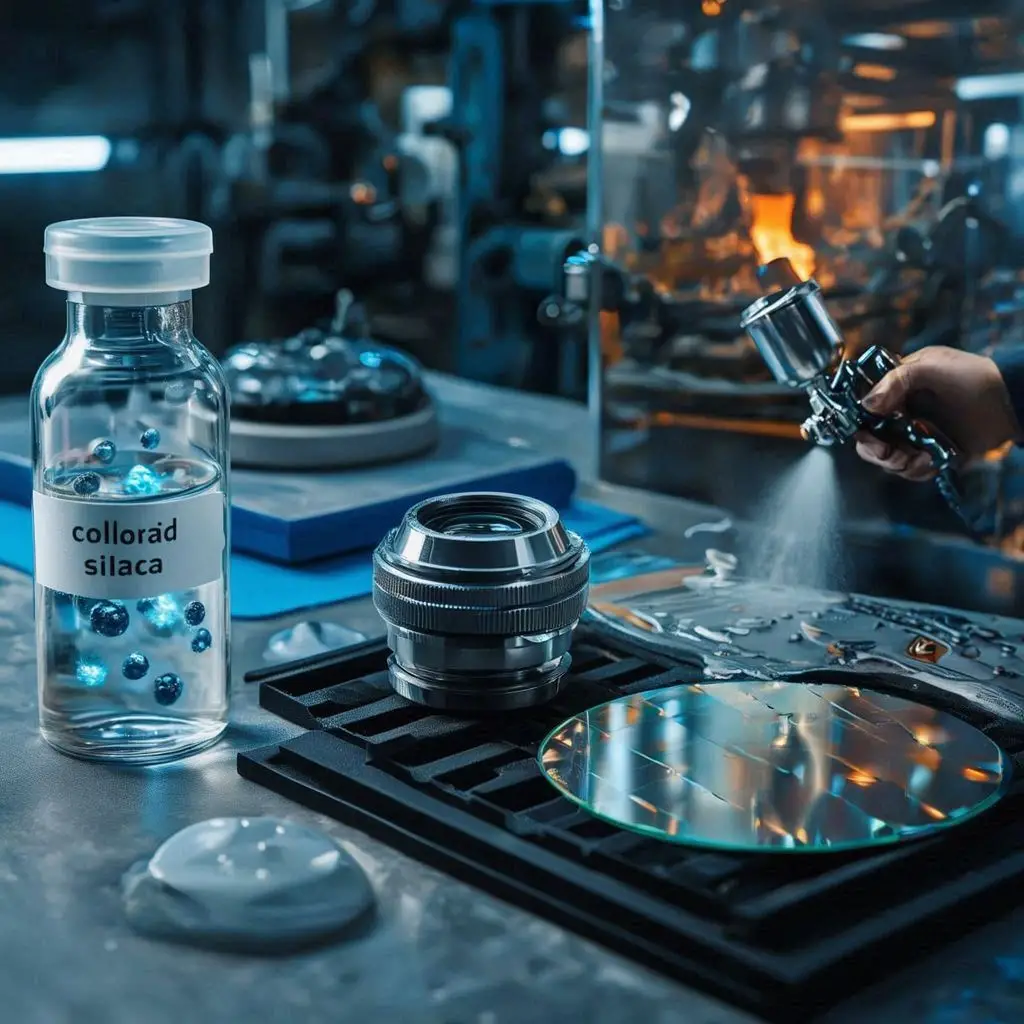
Colloidal Silica: Ludox, Super, and 406 Explained
Colloidal silica is a critical material used across industries—from polishing and coatings to electronics and foundries. This article explores its key variants, including Ludox, Super, and 406 colloidal silica. Learn about their differences, properties, and applications related to silica powder.
Introduction
Produced from purified silica powder, colloidal silica is a stable dispersion of amorphous particles in water, widely used in high-precision industrial processes. Thanks to its customizable properties, including particle size and purity, it serves critical roles in industries such as semiconductor manufacturing and casting. Products like Ludox, Super, and 406 represent key variants, each engineered for targeted industrial use. Understanding the properties and benefits of these types can help buyers, researchers, and manufacturers make informed decisions.
Colloidal Silica
Summary: As a stable and versatile material, colloidal silica consists of silica nanoparticles dispersed in water, widely applied in industrial processes for its functional properties.
Made from amorphous silica particles suspended in water, colloidal silica creates a consistent and reliable dispersion used across many industries. These particles are typically 5–100 nm in size and are negatively charged to prevent aggregation. It is often derived from silica powder through chemical processes, making it suitable for high-performance industrial use.
The technical advantages of colloidal silica have made it a key material in numerous industrial sectors, including:
- Semiconductors: For precision surface polishing (CMP – Chemical Mechanical Polishing).
- Investment casting: As a binder in ceramic molds.
- In coatings and paint formulations, colloidal silica improves surface hardness, scratch resistance, and fluidity.
- Catalyst supports and insulating materials.
Colloidal silica's chemistry allows for customizable pH levels, particle sizes, and solid content, ensuring its suitability across diverse technical specifications.
Ludox Colloidal Silica
Summary: Ludox colloidal silica is a high-purity, brand-name variant known for consistent performance in surface treatment, coatings, and polishing applications.
Ludox colloidal silica, a product line by Grace, is among the most recognized and trusted colloidal silica brands in the world. These products are especially valued for their uniform particle size, high stability, and tailored surface charge.
Typical Ludox features include:
- Colloidal silica is often available with particle sizes spanning from 12 nm to 30 nm, depending on the application.
- Solid content between 15% to 50%.
- Excellent compatibility with organic and inorganic systems.
Ludox is extensively used in:
- Paper and textile coatings: To improve printability and durability.
- Polishing slurries: In optical and semiconductor polishing.
- Catalyst manufacturing: As a binder or support due to its high surface area.
Moreover, Ludox products are often used in academic research and product development, serving as a benchmark for colloidal silica performance.
Super Colloidal Silica
Summary: Super colloidal silica features ultra-fine particle size and enhanced surface properties, ideal for advanced material processing and nanotechnology.
Super colloidal silica refers to high-grade dispersions with extremely fine particle sizes, often below 10 nm. These ultra-small particles offer enhanced surface area and greater reactivity, making them suitable for high-end applications where conventional colloidal silica may not suffice.
Key characteristics include:
- Particle sizes as low as 3–8 nm.
- High colloidal stability and long shelf life.
- Transparent or translucent appearance due to small particle size.
Applications of super colloidal silica:
- Advanced electronics: Used in ultra-fine polishing and dielectric layers.
- Biomedical uses: In drug delivery research and diagnostic kits.
- High-performance coatings: For clear coats and anti-scratch films.
Super colloidal silica is usually more expensive due to the complex synthesis required, but it is indispensable where nanoscale control is essential.
406 Colloidal Silica
Summary: 406 colloidal silica is a specialized industrial-grade dispersion commonly used in ceramics, casting, and insulation due to its binding strength and thermal stability.
406 colloidal silica is typically an industrial-grade product known for its balanced particle size and high binding capacity. It’s often chosen for refractory and casting applications where cost-efficiency and strength are both important.
Specifications often found in 406 colloidal silica:
- Particle size: around 15–25 nm.
- pH range: near-neutral or slightly alkaline.
- Solid content: approximately 30–40%.
Typical uses:
- Colloidal silica improves both mechanical strength and thermal insulation properties in ceramic fiber applications.
- Foundry binders: Replacing organic binders to reduce emissions and improve casting precision.
- Adhesives and sealants: Adding cohesive strength and water resistance.
The “406” designation may vary by supplier but generally refers to a formulation optimized for performance and handling in high-volume industrial environments.
Conclusion
Colloidal silica is a foundational material across many advanced industries, owing to its nanoscale structure, tunable properties, and adaptability. Whether you need precision polishing, high-strength binders, or nanoscale surface treatments, choosing the right variant is key. Ludox colloidal silica offers reliable performance and consistency; Super colloidal silica delivers cutting-edge nano-level performance; and 406 colloidal silica brings cost-effective strength to industrial processes.
Each form originates from silica powder, refined into stable, high-function dispersions. By understanding their differences and best-use cases, industries can fully harness the potential of colloidal silica in their manufacturing, coating, or development processes.
As technological demands increase, the role of colloidal silica will only grow. Its environmental advantages—such as low toxicity and reduced volatile emissions—make it a sustainable choice for next-generation manufacturing. Moreover, ongoing innovation in silica dispersion technology is enabling even finer control over particle behavior and interaction with various substrates. Whether in electronics, energy, construction, or healthcare, colloidal silica continues to offer solutions that are both technically advanced and environmentally responsible. Selecting the right grade ensures optimal results, improved performance, and long-term material efficiency.

